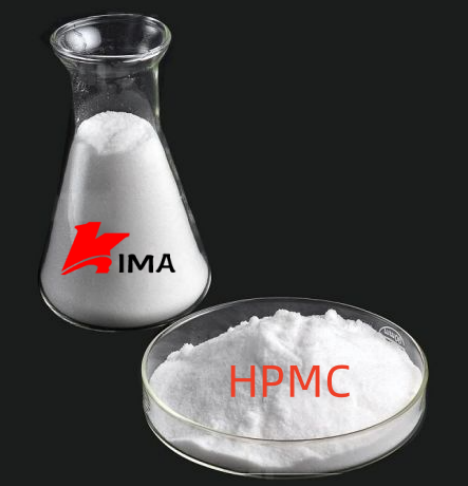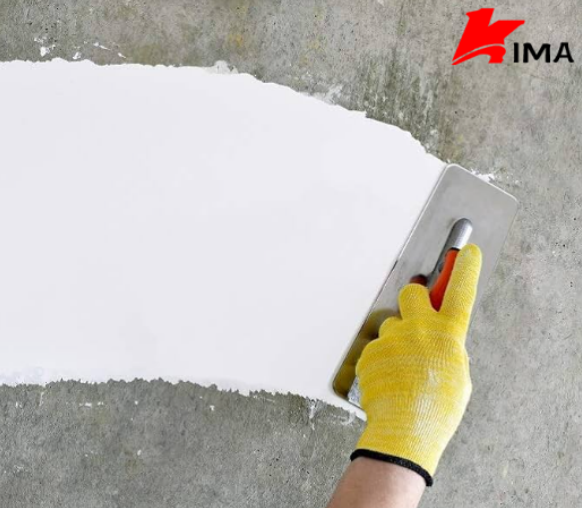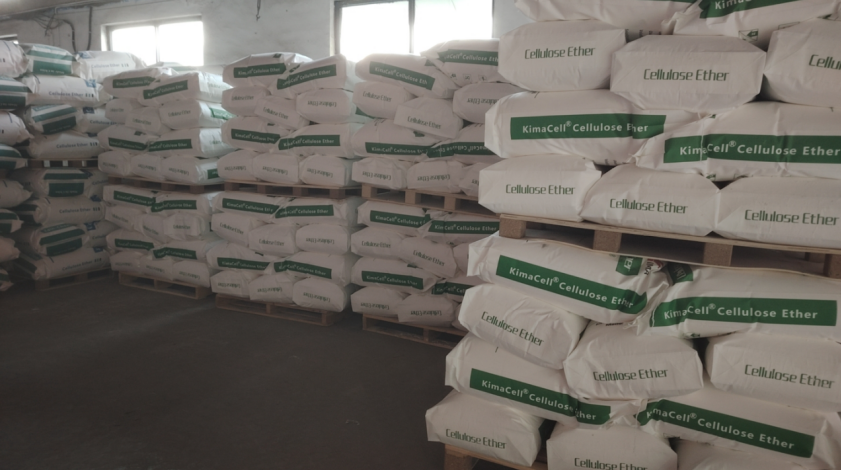Choosing the right Hydroxypropyl Methylcellulose (HPMC) for producing putty powder is crucial for ensuring the desired performance characteristics, including workability, adhesion, water retention, and open time. HPMC is a key component in putty powder formulations as it provides viscosity and consistency, improves the spreadability, and enhances the ease of application.

Key Factors to Consider When Choosing HPMC for Putty Powder
Viscosity
Viscosity is a critical factor when selecting HPMC for putty powder. The viscosity of HPMC affects the paste's spreadability, adhesion, and ease of application. For putty formulations, a medium to high viscosity grade of HPMC is often preferred because it helps improve the workability of the putty.
Lower Viscosity (e.g., 5-10 mPa·s): Offers easier flow and is suitable for fast applications or formulations where high thixotropic behavior (resistance to flow under pressure) is not needed.
Medium Viscosity (e.g., 50-100 mPa·s): Balances workability and adhesion and is the most commonly used for general putty applications.
Higher Viscosity (e.g., 200-400 mPa·s): Provides thicker consistency, enhancing the spreadability of the putty and improving the open time (time before the putty starts setting).
Water Retention Capacity
Water retention is one of the most important properties of HPMC in putty formulations. Adequate water retention prevents the putty from drying out too quickly, which ensures that the surface remains workable for a longer period.
A higher degree of substitution in HPMC (more hydroxypropyl groups) typically increases water retention and improves the rehydration properties of the putty.
For outdoor or humid conditions, a HPMC grade with excellent water retention can help prevent cracking or shrinkage of the putty.
Binder Strength (Adhesion)
HPMC contributes to the binder properties of the putty. The ability of HPMC to provide adhesion to the surface is crucial for the putty to stay in place during application and subsequent curing.
The binder strength of HPMC is influenced by the molecular weight and the substitution degree. High molecular weight HPMC grades tend to provide stronger adhesion.
Thixotropy
Thixotropic behavior refers to a material’s ability to change viscosity under shear (e.g., when mixed or applied) and recover once the shear force is removed. For putty formulations, thixotropy is desired as it ensures that the material does not flow excessively during application yet remains easy to spread.
High thixotropy is beneficial for preventing sagging and improving application control. HPMC grades that exhibit moderate thixotropic behavior are ideal for putty formulations.

Degree of Substitution (DS)
The degree of substitution indicates the extent to which the cellulose backbone is substituted with hydroxypropyl and methyl groups. The higher the DS, the better the water retention and improved solubility characteristics.
For putty formulations, a medium DS (e.g., 1.5-2.0) is typically preferred, as it strikes a balance between water retention and viscosity. A very high DS (over 2.5) may increase water retention but could lead to reduced mechanical properties.
Centrifugation and Ease of Mixing
Some grades of HPMC may require different mixing techniques to achieve optimal performance. HPMC with lower viscosity may dissolve and disperse faster in water, while higher viscosity grades might require more time and higher shear forces for proper mixing.
Temperature Resistance
Depending on the environment where the putty is applied, temperature resistance may be an important factor. HPMC grades with higher thermal stability can withstand higher temperatures without degrading or losing their properties.
Table: Comparison of HPMC Grades for Putty Powder Production
Grade | Viscosity (mPa·s) | Water Retention | Thixotropy | Binder Strength (Adhesion) | Best Use Case |
HPMC 5-10 | 5-10 | Low | Low | Moderate | Fast-drying putty applications, low viscosity requirement |
HPMC 50-100 | 50-100 | Moderate | Medium | Good | General-purpose putty, balancing workability and adhesion |
HPMC 200-400 | 200-400 | High | High | High | High-performance putty for increased spreadability, longer open time |
HPMC 1500-2000 | 1500-2000 | Very High | High | Very High | High-viscosity putties for specialized applications (e.g., outdoor use) |
HPMC 10000 | 10000 | Very High | Very High | Very High | Use in formulations requiring exceptional water retention and adhesion |
Additional Considerations
Compatibility with Other Additives
HPMC may interact with other ingredients in the putty formulation, such as fillers (e.g., calcium carbonate, marble powder), binders (e.g., cement, gypsum), and stabilizers. It’s important to ensure compatibility between HPMC and other materials to achieve optimal performance.
Shelf Life and Storage
HPMC is generally stable if stored in dry, cool conditions, but the shelf life can be influenced by humidity and temperature. Make sure to use the correct storage practices to maintain the effectiveness of the HPMC in your putty formulations.
Environmental Considerations
If your putty is used in eco-sensitive or environmentally-conscious applications, consider using HPMC derived from sustainable sources or biodegradable options.

Selecting the right grade of Hydroxypropyl Methylcellulose (HPMC) for putty powder production involves considering a variety of factors, including viscosity, water retention, thixotropy, and adhesion strength. Medium to high viscosity grades of HPMC (50-400 mPa·s) are generally preferred for putty formulations, as they offer a good balance of workability, adhesion, and open time. The table above summarizes the key characteristics of different HPMC grades, helping you choose the best one based on your specific application needs.
It’s essential to test different grades of HPMC under your specific conditions to determine the most suitable formulation for the putty powder you are producing. Adjusting factors such as the amount of HPMC used, the combination with other binders and fillers, and the production method will help optimize the final product's performance.
 English
English 日本語
日本語 français
français Deutsch
Deutsch Español
Español italiano
italiano русский
русский português
português العربية
العربية Türkçe
Türkçe Nederland
Nederland






